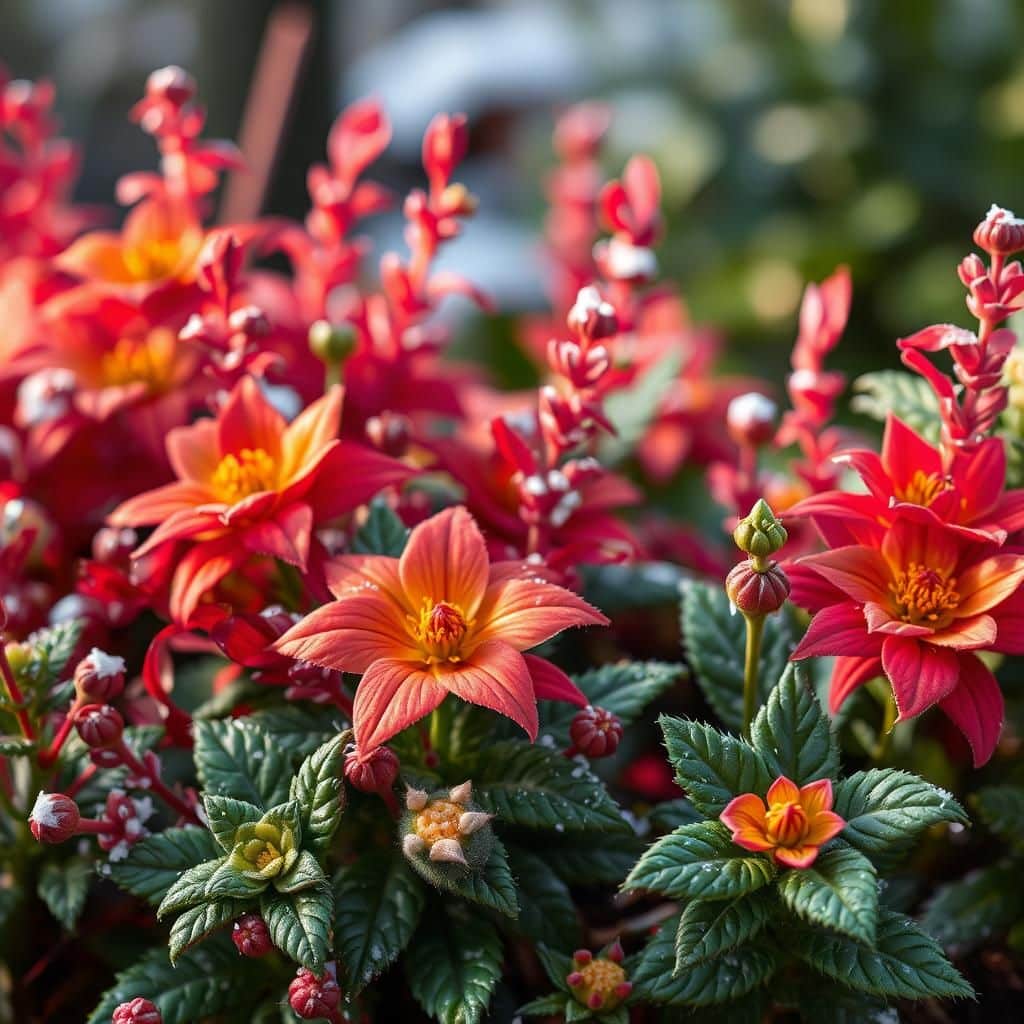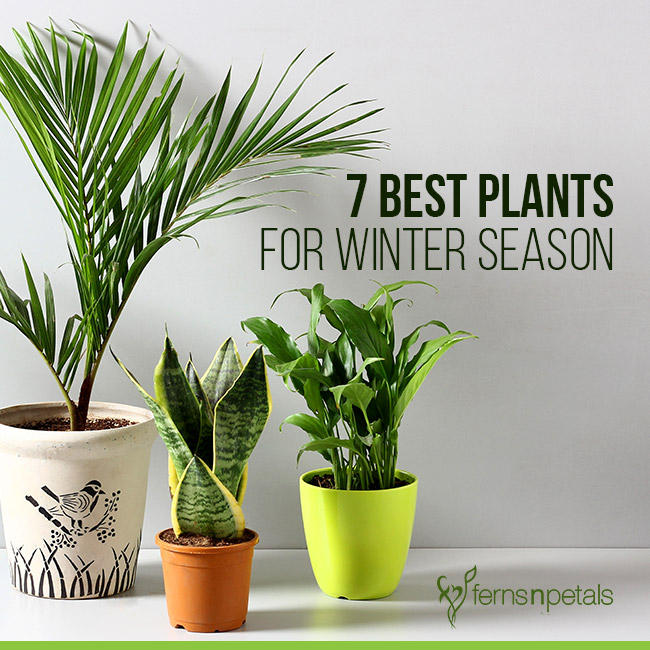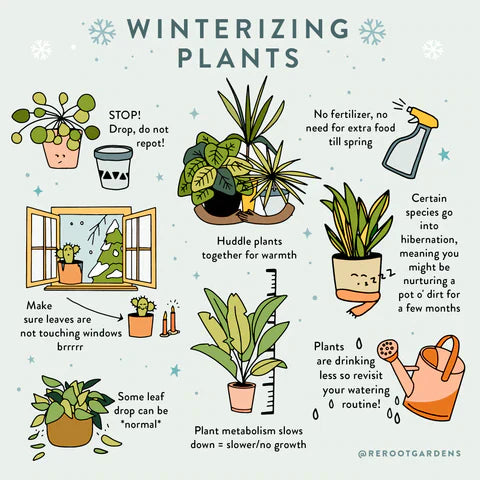What Plants to Plant in Winter: A Guide for Gardeners

Winter may seem like a dormant season for gardening, but it offers unique opportunities for planting and nurturing hardy plants. As temperatures drop, certain varieties thrive and can bring life to your garden even in the coldest months. Understanding which plants are best suited for winter planting is essential for any gardener looking to maintain a vibrant landscape year-round. In this guide, we’ll explore a variety of cold-tolerant plants, from vegetables to ornamental species, and provide tips on care and cultivation to ensure your winter garden flourishes despite the chill. Get ready to transform your winter gardening experience!
Winter Planting: What Plants to Consider
During the winter months, gardening enthusiasts can still maintain an active green thumb by selecting the right plants for this colder period. Vegetables such as kale, spinach, and garlic are excellent choices, as they can withstand frost and may even improve in flavor after exposure to it. Additionally, ornamental plants like pansies and snapdragons can add vibrant color to cold gardens. When choosing plants for winter gardening, it's essential to consider the local climate, soil health, and the specific needs of each plant variety to ensure a successful winter harvest or display.
Vegetables Suitable for Winter Planting
Several vegetables thrive in winter conditions, making them ideal for planting in the colder months. Kale and broccoli are known for their resilience and ability to develop even better flavors after frost. Other options include carrots and beets which can be sown late in the fall and harvested in winter. These vegetables not only offer nutritious benefits but can also provide fresh produce despite the harsh weather, ensuring that your garden remains productive year-round.
Herbs to Grow in Winter
While many herbs struggle in the winter cold, some varieties can flourish with proper care. Parsley, thyme, and chives are notable contenders that can survive frost and continue to grow slowly through the winter months. These herbs can be grown in pots indoors as well, allowing easy access during cooking. Planting these herbs can provide fresh flavors throughout the winter, enhancing your culinary endeavors.
Ornamental Plants for Winter Color
Incorporating ornamental plants into your winter garden can brighten up dull landscapes. Plants like pansies and snapdragons are hardy enough to withstand chilly temperatures and bloom during the winter months. Their ability to thrive and provide color in the garden can greatly enhance the visual appeal of your outdoor space, combating the gray winter atmosphere with their vibrant petals.
Overwintering Techniques
To successfully grow plants during winter, employing overwintering techniques is crucial. This can involve using cold frames or greenhouses to provide shelter from harsh conditions while still allowing natural sunlight to reach the plants. Mulching around plants can also help protect the soil from freezing and boost root development. Understanding these techniques is essential for maximizing the potential of your winter garden.
Considerations for Winter Planting
When selecting plants for winter, it is vital to consider various factors such as the hardiness zone, type of soil, and available sunlight in your garden. Additionally, plant spacing and watering needs may differ from those in warmer months. Preparing for winter planting includes testing soil temperature and utilizing protective measures to ensure that plants are well established before the freezing temperatures hit, promoting robust growth despite the winter chill.
| Plant Type | Examples | Hardiness |
|---|---|---|
| Vegetables | Kale, Spinach, Garlic | Hardy |
| Herbs | Parsley, Thyme, Chives | Moderate |
| Ornamentals | Pansies, Snapdragons | Hardy |
| Techniques | Cold Frames, Mulching | N/A |
What is the best plant to plant in winter?

The best plant to plant in winter largely depends on the climate and region you are in. However, some common choices that thrive in colder months are winter vegetables and perennials. Below are details on various plants that can be successfully planted in winter.
Winter Vegetables
Many winter vegetables can thrive under cold conditions and can even improve their flavor by experiencing frost. Some of the best options include:
- Kale - This hardy green can withstand freezing temperatures, making it ideal for winter planting.
- Garlic - Best planted before the ground freezes, garlic will establish roots during winter and be ready for harvest in summer.
- Spinach - Spinach is a cool-weather crop that grows well in winter, especially in milder climates.
Perennials
Certain perennial plants can be planted in winter, offering a bloom in the spring. These include:
- Pansies - These flowers can tolerate cold and bring color to winter gardens, often blooming early in spring.
- Hellebores - Known as the Christmas rose, they can bloom even under snow, adding beauty during the cold months.
- Thyme - This hardy herb can be planted in winter and will continue to grow as the weather warms.
Herbs for Winter Gardening
Some herbs can also be planted in winter, especially in protected environments like greenhouses or indoors. These include:
- Parsley - A versatile herb that can be sown in winter for fresh greens in the kitchen.
- Cilantro - This herb can be harvested through fall and winter, providing flavor to various dishes.
- Chives - Chives can survive winter conditions and will regrow in the spring.
Cover Crops
Cover crops are essential for maintaining soil health during winter. They can prevent erosion and improve soil fertility. Common options are:
See also:
- Winter Rye - This grain is excellent for preventing soil erosion and enhancing soil structure.
- Field Peas - These legumes fix nitrogen in the soil, greatly benefiting subsequent crops.
- Vetch - Vetch helps improve soil health and can be used as a green manure when tilled back into the soil.
Indoor Plants
If outdoor planting isn’t feasible, many plants can be grown indoors during winter. Consider these:
- Succulents - These hardy plants require minimal water and thrive in indoor conditions.
- Spider Plant - Known for purifying indoor air, this resilient plant can survive various light conditions.
- Pothos - This low-maintenance plant can adapt well to indoor environments and prefers indirect light.
What month do you plant a winter garden?

To plant a winter garden, the ideal month typically varies depending on your location, climate, and the types of plants you wish to grow. Generally, the best time to start planting for a winter garden is in late summer to early autumn, particularly between August and September. During these months, you can sow seeds and transplant seedlings of various cold-tolerant crops that will thrive in winter conditions.
These plants need time to establish themselves before the coldest months arrive, allowing them to flourish even when temperatures drop. In milder climates, you might be able to plant even later, while in more northern regions, timing is crucial to ensure the crops can mature before heavy frost sets in.
Choosing the Right Location
Selecting an optimal location for your winter garden is essential for maximizing sunlight and protecting your plants. The area should receive at least six hours of sunlight per day, which helps to keep the plants warm. Consider these factors:
- Sunlight Exposure: Choose a spot that receives ample sunlight throughout the day.
- Protection from Wind: Locate your garden near a barrier like a fence or building to shield from harsh winter winds.
- Soil Drainage: Ensure the soil drains well to avoid root rot; raised beds can be beneficial.
Choosing Suitable Crops
Selecting the right cold-hardy crops for your winter garden is crucial to ensure a successful harvest. Some excellent options include:
- Kale: This green thrives in cold weather and can even taste sweeter after a frost.
- Spinach: Known for its resilience, spinach can survive in temperatures as low as 20°F (-6°C).
- Carrots: Once established, they can sweeten in flavor after exposure to frost.
Preparing the Soil
Proper soil preparation is vital for a successful winter garden. Healthy soil provides essential nutrients and support for plants. Consider the following steps:
- Soil Testing: Conduct a soil test to determine pH and nutrient levels.
- Amend as Needed: Add organic matter like compost to enrich the soil.
- Tilling: Loosen the soil to ensure good root penetration and drainage.
Planting Techniques
Using the right planting techniques can enhance the success of your winter garden. Some effective methods include:
- Direct Seeding: Sow seeds directly into the garden bed for crops that tolerate cold.
- Transplanting Seedlings: Start seeds indoors and transplant seedlings to avoid early frost.
- Row Covering: Use lightweight row covers to protect young plants from extreme cold.
Maintenance Through Winter
Maintaining your winter garden involves consistent care and monitoring for optimal growth. Important maintenance tasks include:
- Watering: Water consistently, but avoid overwatering to prevent freezing in the soil.
- Weeding: Keep the area weed-free to reduce competition for nutrients.
- Monitoring Pests: Keep an eye out for pests and diseases that can affect your crops during winter.
Can you plant plants in the winter time?

Yes, you can plant certain types of plants during the winter months, although the options are limited and require careful planning. The ability to plant in winter largely depends on the climate, the specific type of plant, and whether it can tolerate cold temperatures. Many gardeners choose to prepare their winter garden by planting perennials, bulbs, and cold-hardy annuals that can survive mild winters. Additionally, indoor planting or starting seeds indoors can also be a viable option during this season.
Understanding Winter Plant Hardiness
In order to plant successfully in winter, it is crucial to understand the concept of hardiness zones. These zones indicate which plants can thrive in certain temperature ranges.
- Know your zone: Check your local hardiness zone to determine the best plants for your area.
- Cold-tolerant varieties: Choose plants that are specifically bred for cold weather conditions.
- Mulching: Use mulch to help protect plants from extreme temperatures.
Choosing the Right Plants for Winter
Not all plants can survive the winter, so selecting the right varieties is essential. Many vegetables, flowers, and herbs are suitable for winter planting.
See also:
- Vegetables: Consider planting hardy options like kale, spinach, and garlic.
- Flowers: Pansies and violas can add color and can survive light frosts.
- Herbs: Some herbs like thyme and parsley are resilient and can be grown indoors or outdoors.
Indoor Planting During Winter
For those who want to continue gardening during the colder months, indoor planting is a great alternative. Many plants thrive indoors, providing fresh herbs or decorative greens to your home.
- Container gardening: Use pots to grow herbs and small vegetables indoors.
- Grow lights: Invest in grow lights to simulate sunlight for indoor plants.
- Humidity: Keep indoor humidity levels appropriate to support plant growth.
Preparing Your Garden for Winter Planting
Preparing your garden is crucial for successful winter planting. This includes soil preparation and ensuring that your garden can withstand lower temperatures.
- Soil amendments: Add compost or other organic matter to enrich the soil.
- Friday planting: Plant late in the fall for winter growth and harvest in spring.
- Cover crops: Plant cover crops to protect and enrich the soil during winter months.
Winter Gardening Techniques
Implementing specific gardening techniques can enhance your chances of success in the winter. Effective techniques include methods to shield plants from the cold.
- Row covers: Use lightweight fabrics to protect plants from frost.
- Cold frames: Consider building cold frames to keep plants warm.
- Greenhouses: If possible, use a greenhouse to maintain optimal growing conditions.
Can you plant any flowers in winter?

Yes, you can plant certain flowers in winter, although the options are limited and depend on your climate zone. In warmer climates, some flowers can thrive or at least survive the winter. In colder climates, however, the choice of flowers is typically restricted to hardy varieties that can withstand frost.
Understanding Winter Planting Zones
Planting flowers in winter often depends on the USDA hardiness zone in which you live. These zones indicate the average minimum winter temperatures and help determine which plants can survive outside during the colder months.
- Zones 8-10: In warmer regions, you can plant flowers like pansies, snapdragons, and violas.
- Zones 4-7: Options become more limited; consider hellebores and winter jasmine, which can tolerate frost.
- Wintering techniques: Using row covers or cold frames can extend the growing season for certain flowers.
Hardy Winter Flowers
Several flowers are specifically classified as hardy, which means they can withstand harsh winter conditions and even bloom during this cold season. These flowers provide color and vitality when most gardens are dormant.
- Hellebores: Known as Lenten roses, they typically bloom in late winter to early spring.
- Cyclamen: A winter-blooming perennial, cyclamen can thrive in shaded areas during the colder months.
- Snowdrops: These delicate flowers often emerge through the snow, marking the end of winter.
How to Prepare for Winter Planting
Before planting flowers in the winter, it is crucial to prepare your garden properly. This ensures that the selected flowers have the best chance of thriving despite winter conditions.
- Soil amendment: Enrich the soil with organic matter to improve drainage and nutrient content.
- Mulching: Apply mulch around the plants to insulate the soil and regulate temperature.
- Watering: Ensure adequate moisture, as plants can suffer from desiccation during dry winter spells.
Container Gardening in Winter
Planting flowers in containers can be an excellent strategy for winter gardening. Container gardening allows for more control over the growing environment and protection from severe weather conditions.
- Choosing the right containers: Use materials that can withstand freezing temperatures, such as fiberglass or treated wood.
- Placement: Position containers in sheltered spots to protect them from wind and extreme cold.
- Winterizing: Insulate pots with bubble wrap or burlap to prevent roots from freezing.
Winter Flower Care
Once you have planted winter flowers, their care is just as essential as in other seasons. Proper maintenance can foster growth and resilience during cold temperatures.
- Regular monitoring: Check for pests and diseases frequently, as warmer winter spells can encourage infestations.
- Fertilizing wisely: Generally, avoid fertilizing in winter, but provide nutrients as necessary in early spring.
- Pruning: Remove dead or damaged foliage gently to promote healthy growth when spring arrives.
Questions from Our Readers
What are the best plants to sow in winter?
In winter, it's ideal to sow cold-hardy vegetables such as kale, spinach, and garlic. These plants can withstand low temperatures and will thrive when the weather warms up in spring.
Can I plant flowers in winter?
Yes, some flowers can be planted in winter, particularly winter pansies and hellebores. These flowers can bloom in the cold and bring color to your garden during the winter months.
How do I protect my winter plants from frost?
To protect your winter plants from frost, you can use frost cloths, mulch, or even cloches to provide a warmer microclimate. Adding these protective measures helps insulate the plants against harsh winter conditions.
See also:
Is it too late to plant anything in winter?
While winter may seem late, many cold-weather crops can still be planted, especially if you live in a milder climate. Plants like radishes and certain herbs can still be sown before the ground becomes too frozen.

If you want to read more articles like What Plants to Plant in Winter: A Guide for Gardeners, we recommend you check out our Gardeners category.
Leave a Reply
Related Articles